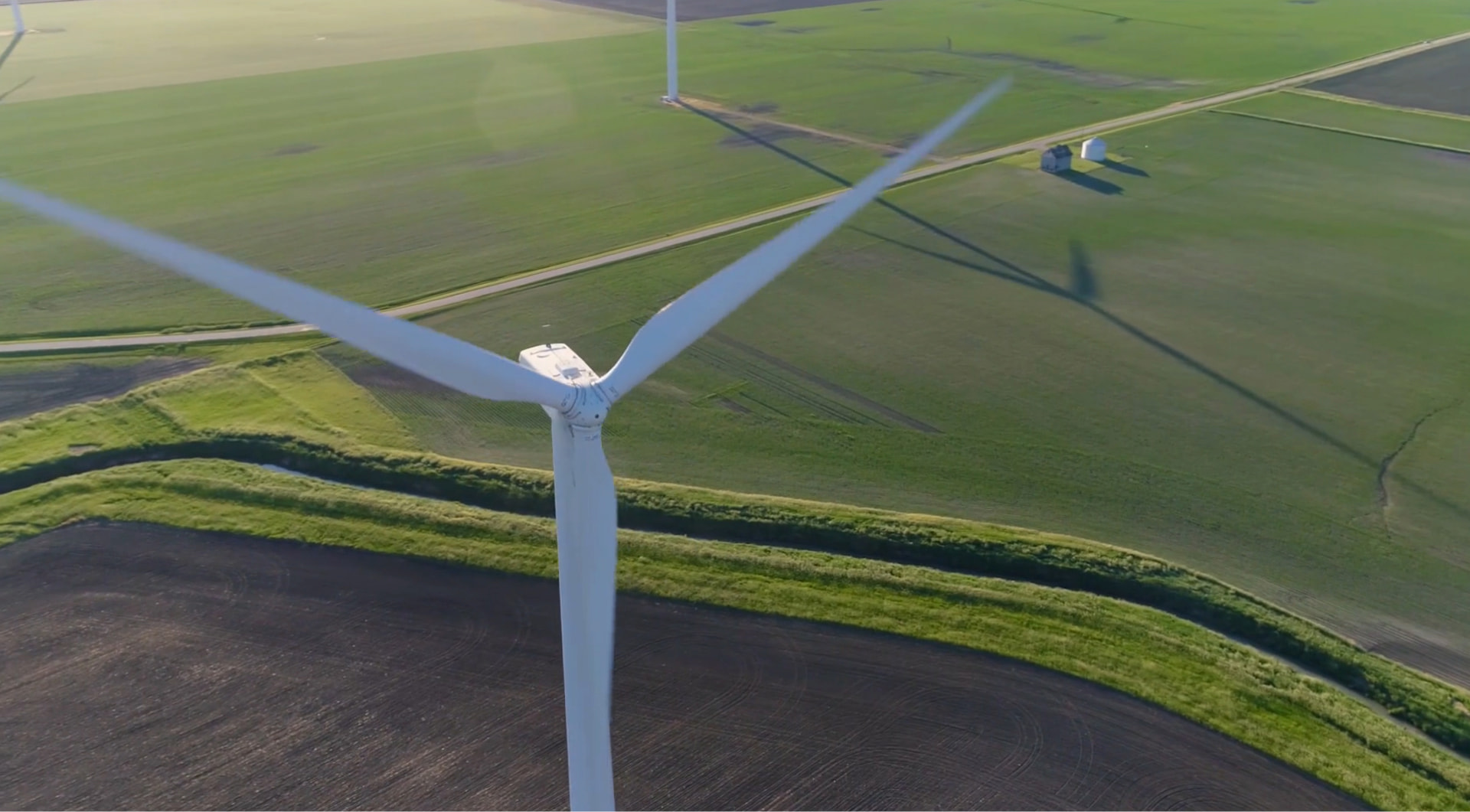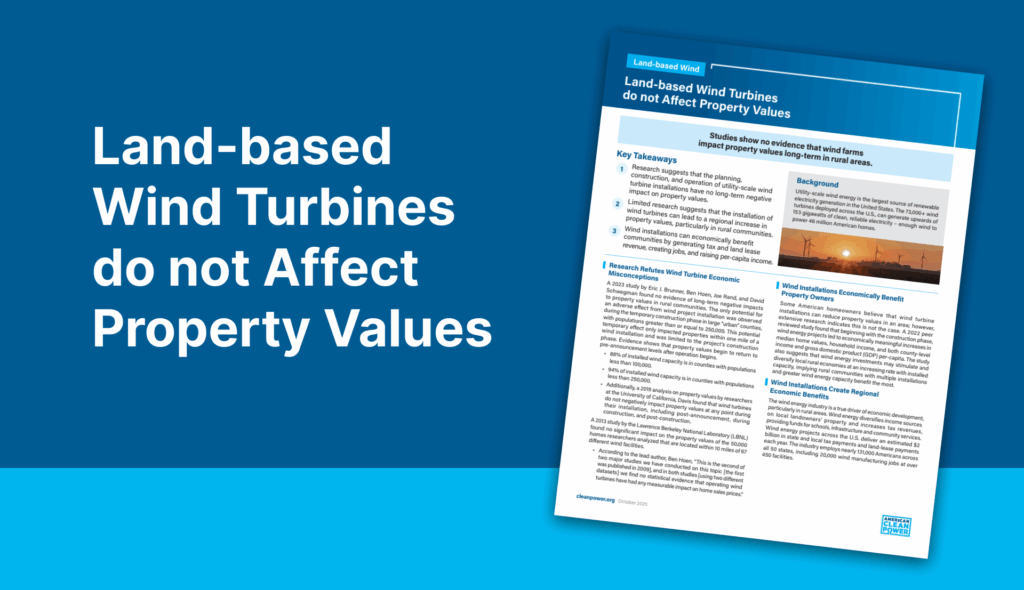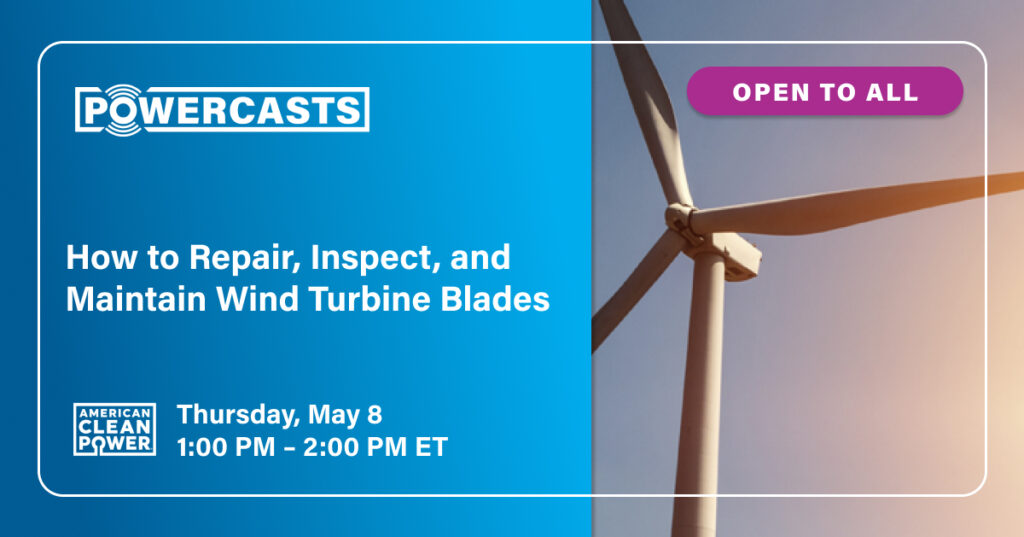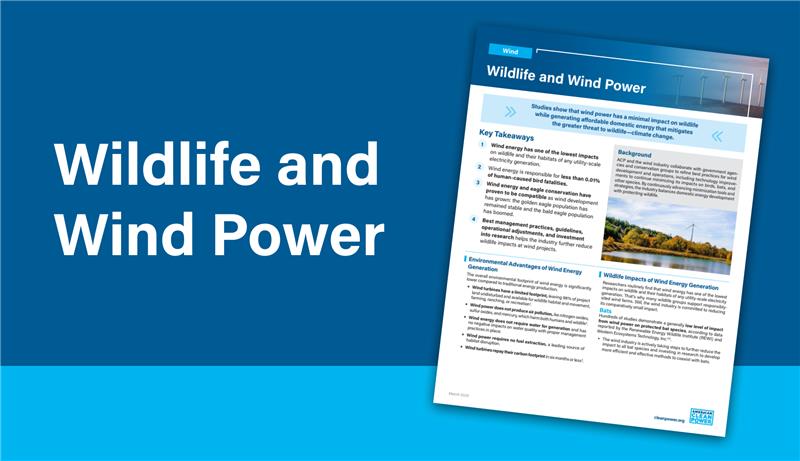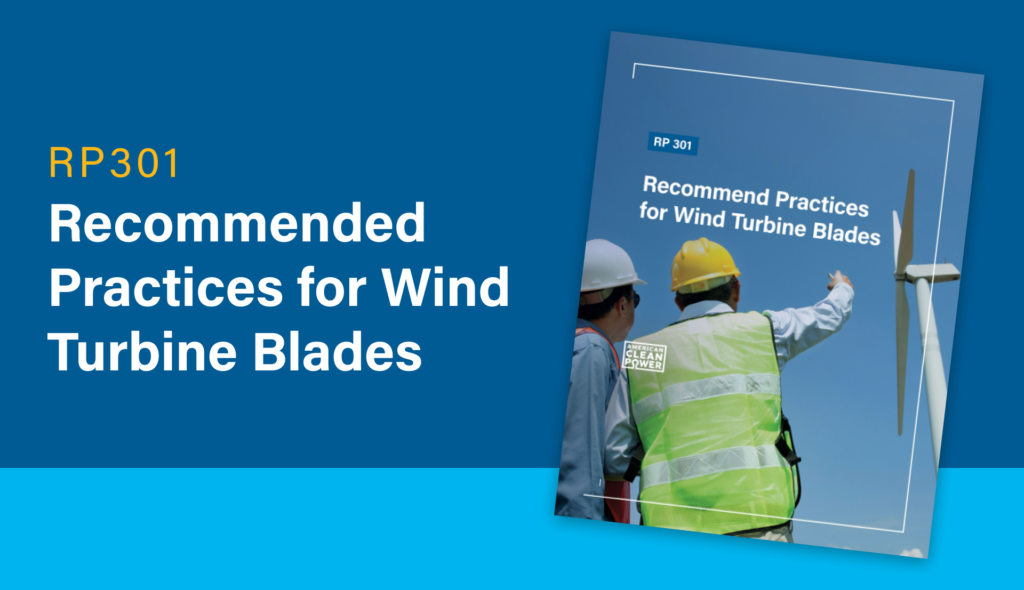American Clean Power
Wind Power Facts
Today nearly 84,000 onshore wind turbines across the country are generating clean, reliable power. Wind power capacity totals over 155 GW, making it the fourth-largest source of electricity generation capacity in the country. This is enough wind power to serve the equivalent of nearly 50 million American homes.
Statistics
275,000+
25%
28GW
How Does Wind Power Work?
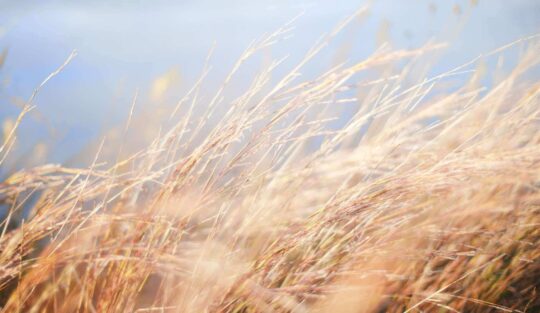
The wind blows naturally
Wind energy (or wind power) refers to the process of creating electricity using the wind or air flows that occur naturally in the earth’s atmosphere. Modern wind turbines capture kinetic energy from the wind to generate electricity. The first step is wind blowing across the blades of the turbine.

Turbine blades begin to spin
The blade rotor turns a main shaft connected to a gearbox that converts the blade rotor’s low-speed, high-torque power into high-speed, low-torque power that is transferred to a generator. Some direct-drive turbines skip the gearbox stage and directly excite electricity generator components.

Rotating blades transfer power
Wind turbines use a variety of drivetrain designs to extract power. Some are direct-drive, which removes the gearbox, and some are medium-speed geared, which is essentially a blend between geared and direct-drive. In all design varieties, generators create electricity from the rotating power of the blade rotor.

Electrical power is generated and transmitted
Wind turbines produce Direct Current (DC) power, which is converted to Alternating Current (AC) electricity by power converters and transferred to cables buried throughout the footprint of the wind farm. High-voltage electricity is then delivered to the utility scale power grid, which transmits it to homes, businesses, and other end-users.
Answers to top onshore wind power questions
How much wind is needed for a wind turbine to function?
A typical modern turbine will start to generate electricity when wind speeds reach six to nine miles per hour (mph), known as the cut-in speed. Turbines will shut down if the wind is blowing too hard (roughly 55 miles an hour) to prevent equipment damage. Over the course of a year, modern turbines can generate usable amounts of electricity over 90% of the time. For example, if the wind at a turbine reaches the cut-in speed of six to nine mph, the turbine will start generating electricity. As wind speeds increase, so does electricity production.
Is wind power reliable?
Wind energy only marginally increases total power system variability, as most changes in wind energy output are cancelled out by opposite changes in electricity demand or other sources of supply. A large power plant can shut down abruptly at any time, forcing operators to keep large quantities of fast-acting, expensive reserves ready 24/7. Wind changes tend to be gradual and predictable, making them far less costly to accommodate using less expensive, slower-acting reserves. When wind turbines are spread over large areas, their output becomes far more constant and even easier to accommodate. Additionally, modern wind plants can provide the same grid reliability services as conventional power plants by using their sophisticated controls and power electronics.
What does the term capacity factor mean?
This measures the amount of electricity a wind turbine produces in a given time period (typically a year) relative to its maximum potential. For example, suppose the maximum theoretical output of a two megawatt wind turbine in a year is 17,520 megawatt-hours (two times 8,760 hours, the number of hours in a year). However, the turbine may only produce 7,884 megawatt-hours over the course of the year because the wind wasn’t always blowing hard enough to generate the maximum amount of electricity the turbine was capable of producing. In this case, the turbine has a 45% (7,884 divided by 17,520) capacity factor. This does not mean the turbine only generated electricity 45% of the time. Modern wind farms can have capacity factors greater than 40%, which is close to some types of coal or natural gas power plants.
How does wind energy get to you?
The turbines in a wind farm are connected so the electricity they generate can travel from the wind farm to the power grid. Once wind energy is on the main power grid, electric utilities or power operators will send the electricity to where people need it. Smaller transmission lines, called distribution lines, collect electricity generated at the wind project and transport it to larger “network” transmission lines, where the electricity can travel across long distances to the locations where it is needed. Finally, smaller distribution lines deliver electricity directly to your town, home, or business.
What are the different types of wind turbines?
Wind turbines come in many different sizes and configurations and are manufactured by a range of both domestic and international companies. There are generally speaking three main types of wind turbines: utility scale, offshore wind, and distributed, or “small” wind. The vast majority of turbines installed and energy generated by wind turbines are from utility scale wind turbines and a smaller but fast-growing proportion from offshore wind turbines. Utility scale wind turbines range in size from 100 kilowatts to several megawatts. Electricity is delivered to the power grid and distributed to the end user by electric utilities or power system operators. Offshore wind turbines are also utility scale wind turbines that are erected in large bodies of water, usually on the continental shelf. Offshore wind turbines are larger than land-based turbines and can generate more power. Distributed or “small” wind are single small wind turbines below 100 kilowatts that are used to directly power a home, farm, or small business, and are not connected to the grid.
Is wind energy expensive?
Wind’s cost has declined more than 30% from 2015 to 2024, with improved technology and U.S.-based manufacturing making it competitive with other energy sources and the cheapest source of new electricity in many parts of the country.
Does wind power impact birds and other wildlife?
Wind power is far less harmful to wildlife than traditional energy sources it displaces, including to birds and their critical habitats. Overall, wind causes less than 0.01% of all human-related bird deaths. Other causes include buildings (550 million), power lines (130 million), cars (80 million), pesticide poisoning, (67 million), and radio and cell towers (6.8 million).
How do wind farms affect land usage or farmland?
A large majority of the acreage within an operating wind energy facility remain available for other uses, including farming. In general, the wind turbines themselves and the roads and related infrastructure only take up 2% of the actual project area, meaning 98% of a wind farm project area can continue to be used for its prior purpose, including farming, ranching, and recreation.
Are there health and safety concerns with wind power?
Concerns about wind power sometimes reference shadow flicker or noise. However, the science is clear and unambiguous that wind projects do not cause negative health effects. Dozens of independent, peer-reviewed studies conducted around the world, including the U.S., have consistently found no evidence that wind farms cause any negative physical health effects. Shadow flicker is predictable, harmless, and passes quickly. It is based on the sun’s angle, turbine location, and the distance to an observer; it can be avoided by several methods. Regarding noise, typically, two people can carry on a conversation at normal voice levels even while standing directly below a turbine. Millions of people around the world live and work near wind farms without issue, and the Lawrence Berkeley National Laboratory found 92% of people living within five miles of a wind turbine report positive or neutral experiences.
Does it take more energy to make a wind turbine than the turbine will produce?
No. It’s a common myth that it takes more energy to manufacture and build a wind turbine than the turbine will produce. In reality, a typical wind turbine will repay its carbon footprint in less than six months, and it will generate emission-free electricity for the remainder of its 20 to 30 year lifespan.
